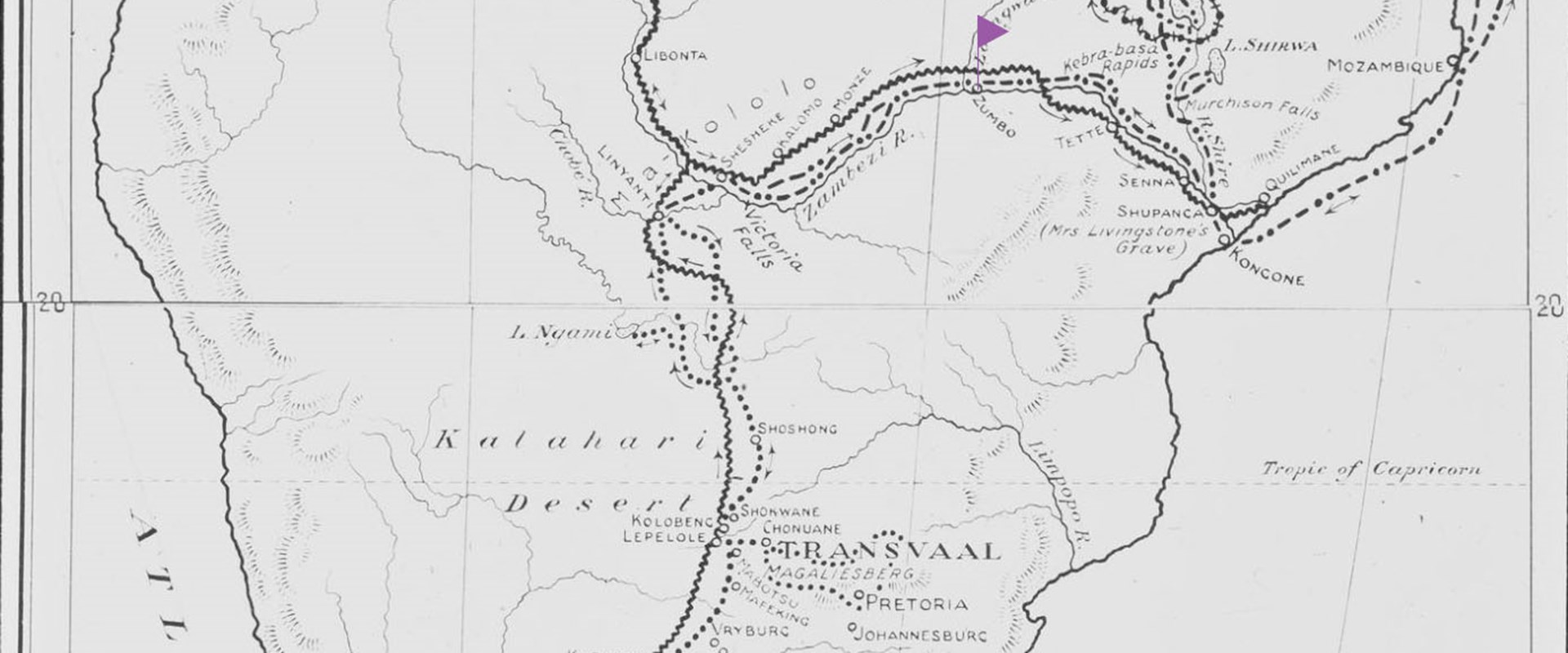Key in a search term below to search our website.
Key in a search term below to search our website.

In January 1856, Livingstone and his party reached Zumbo, at the confluence of the Zambezi and Luangwa rivers, once a thriving Portuguese settlement trading in ivory and slaves. Livingstone found it in ruins with crumbling stone buildings. In his journal Livingstone imagined the scene in days gone by:
"The merchants, as they sat beneath the verandahs in front of their houses, had a magnificent view of the two rivers [...], the church at the angle, and the gardens which they had on both sides of the rivers."
Travels and Research in South Africa, John Murray, London, 1912. p. 398. (First edition 1857)
Livingstone collected around a field of coal in Zumbo and he also found metamorphic rocks, such as gneiss, and volcanic rocks, like basalt.